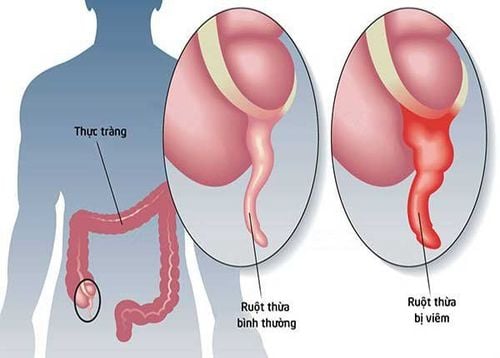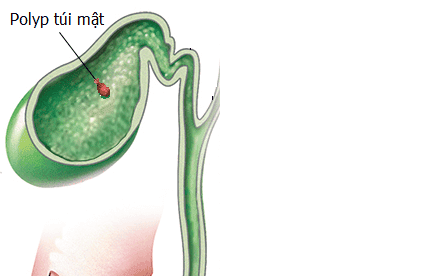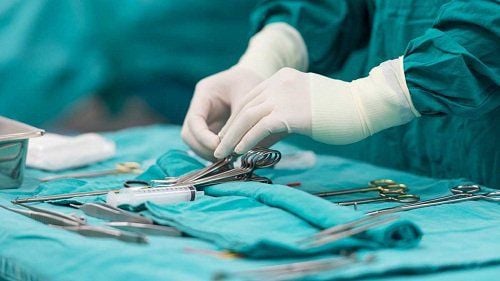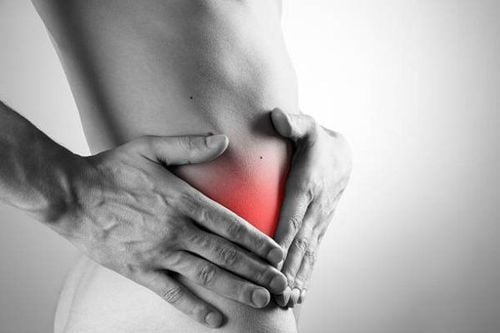This is an automatically translated article.
This article is professionally consulted by resident Doctor Le Thanh Tuan - Department of General Surgery - Vinmec Nha Trang International Hospital. The doctor has extensive experience in examination, treatment and surgery of abdominal diseases.The appendix has a sac-like structure, attached to the cecum. The stump of the appendix empties into the cecum about 3cm below the ileocecal angle. Appendicitis is a very common surgical emergency, and appendectomy alone should be performed early to prevent possible complications.
1. Location of the appendix in the body
The appendix is a small intestine, 0.5-1cm in diameter, about 8cm long, sac-like attached to the cecum - the first segment of the large intestine. The appendix is located in the lower right abdomen, the wall of the appendix is very thick, composed of 4 layers like the large intestine. The mucosa and submucosa of the appendix are rich in lymphoid tissue, which degenerates with age and almost disappears in the elderly.The appendix serves as a reservoir for beneficial bacteria for digestion and is a component of the digestive immune system. However, these roles are not so important and appendectomy will not weaken the immune system nor increase the risk of infection.
Appendicitis is a very common abdominal surgical disease, the disease can occur at any age. However, the most common affected subjects are men aged 10-19 years. There are many causes of appendicitis such as:
Infection of the appendix Due to fecal matter, fecal stones, calcium salts or tumor blocking, leading to inflammation and infection of the appendix. Lymphocyte hyperplasia is related to a number of diseases such as Crohn's disease, amoebic infection, measles, enteritis, respiratory inflammation,... Other causes such as: food stuck in the appendix, roundworm, enlarged lymphatic tissue blood,... Some studies show that the frequency of disease occurrence in summer is usually higher than in other seasons. People who live in areas with polluted air or a diet rich in protein, low in fiber, and high in fat have a higher risk of developing the disease.

2. Symptoms of appendicitis
The most typical symptom of appendicitis is abdominal pain. Usually, the pain will start, radiating to the epigastrium and navel region. The pain is moderate, dull, sometimes with prominent muscle spasms. After 4-6 hours, the pain will spread down and localize in the right iliac fossa, the pain is continuous and gradually increasing. There are some cases where there is no upper abdominal pain but the onset of abdominal pain in the right lower abdomen.Patients usually have a mild fever in the range of 37.5-38.5oC, if the patient has a high fever of 39oC or higher, it is possible that appendicitis has complications.
Other symptoms are loss of appetite, nausea, vomiting. Some patients may experience constipation, difficulty passing gas, sometimes diarrhea, abdominal distension, tachycardia, painful urination, blood in the urine,...

3. Simple appendectomy technique
If appendicitis is not detected and treated promptly, there is a risk of appendicitis rupture, causing serious and life-threatening complications such as peritonitis, appendicitis, appendicitis, etc. Currently, there is no method to prevent appendicitis, and early diagnosis and intervention are the only ways to reduce complication rates and mortality.Patients will be diagnosed with appendicitis by a doctor after clinical examination, blood tests and performing imaging techniques such as abdominal ultrasound, computerized tomography (MSCT), Magnetic resonance imaging (MRI), .. results are consistent with the patient's condition. Once diagnosed, the patient should undergo appendectomy as soon as possible to prevent complications.
Depending on the condition, the degree of inflammation of the appendix, the patient's physical condition and history, the doctor will consider between two simple appendectomy techniques: open surgery and laparoscopic surgery.

If there are signs of prolonged abdominal pain, especially abdominal pain above the navel spreading to the right iliac fossa and the pain is increasing, the patient should quickly go to the examination and treatment facilities. Do not be subjective and self-medicate at home. The techniques of appendectomy alone when the patient has no complications is usually simple, performed quickly, and the patient recovers quickly. If complications have occurred, the risk of endangering the patient's health increases, the treatment process is much more difficult.
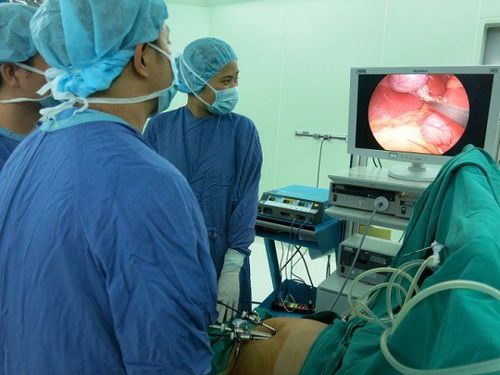
With outstanding advantages in facilities, modern machinery system, Vinmec is increasingly appreciated not only in laparoscopic appendectomy but also in many other techniques.
The medical team performing the surgery are highly qualified and experienced, ready to handle even when unexpected complications occur. After surgery, the patient will be cared for and closely monitored, rested in a high-quality ward of international standards, providing maximum support for the recovery process.
Please dial HOTLINE for more information or register for an appointment HERE. Download MyVinmec app to make appointments faster and to manage your bookings easily.
Recommended video:Periodic health check at Vinmec: Protect yourself before it's too late!
MORE: Symptoms of acute appendicitis Complications of acute appendicitis Does treatment for appendicitis require surgery or not?





